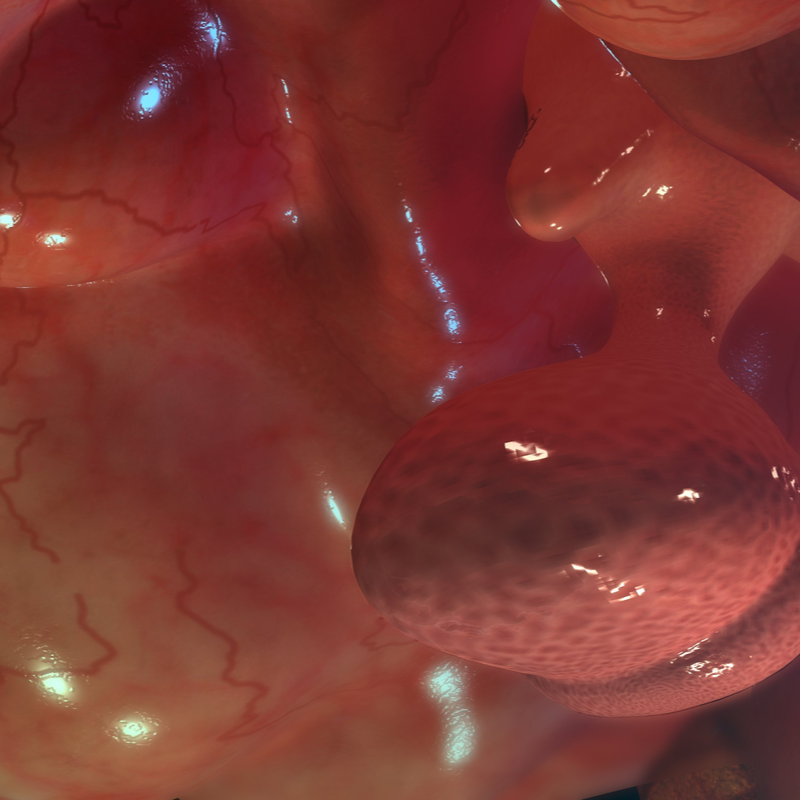
What is a pituitary tumour?
A pituitary tumour is a tumour in the pituitary gland. In most cases, they affect the anterior lobe of the pituitary gland and are benign form. Nevertheless, in most cases they have to be removed because the space in the brain is rather limited and there can be enormous functional impairment in the surrounding tissue. So far the exact cause for the development of the tumour is still completely unclear. A large proportion of pituitary tumours occur in connection with a hereditary disease, the MEN-1 syndrome. Predominantly adults and rather rarely children are affected.
How often does a pituitary tumour occur?
This type of tumour does not occur in high numbers, only about 1-4 people out of 100,000 in Germany are affected. The average age at diagnosis is between 30 and 45 years.
What are the symptoms of a pituitary tumour?
The pituitary tumour can cause different symptoms. This depends on exactly where the tumour is located, how big it is and whether it produces hormones or not. A pituitary tumour disrupts the hormone balance enormously if it produces hormones. Which and whether a tumour produces hormones at all depends on which cells it emerged from. However, hypophthisis tumours can cause general symptoms because they displace the tissue that is in the immediate vicinity and restrict their functionality. For example, there is a deficiency of certain hormones because the normal production of the hormones is impaired. In most cases, the hormones gradually drop and the following symptoms occur:
- Feeling weak,
- Feeling sick,
- Circulatory problems,
- Disturbances of the libido and sexual functions.
Furthermore, visual disturbances and visual field deficits
can occur because the pituitary tumour presses on the optic nerve, which runs directly next to the
pituitary gland. Like any other tumour inside the
head, it can cause symptoms such as epileptic seizures and headaches
.
How is a pituitary tumour diagnosed?
First the doctor will ask about the complaints, the symptoms and the underlying diseases. The doctor will also ask about your current medication regimen, which is important and helpful for . This will be followed by a physical examination. With the help of radiological examinations such as MRI or CT, the pituitary gland and the bony structure around it can be made visible. Certain visual examinations can find out whether there are any visual disorders. Blood tests are used to determine the hormone concentrations in the blood. The function of the anterior pituitary gland is tested with corresponding function tests. To do this, the patient is given certain hormones and then is measured to see if and how the body reacts to them.
How is a pituitary tumour treated?
Depending on the size of the tumour, the choice of therapy is decided. The very best, of course, is if the tumour and its tissue can be completely and completely removed. In most cases, the metabolism can return to normal and the symptoms disappear. Medications are available for most of the symptoms and complaints described . These are used especially when a tumour cannot be completely removed . But radiation therapy is also considered in such cases .
Surgical removal is possible for tumour sizes up to 1 cm via the transsphenoidal approach, i.e. via the nose . If the tumour is larger than 1 cm, the transcranial approach, i.e. via the skullcap, is usually chosen.
If the patient refuses an operation or the tumour has already grown too much that an attempt to remove it surgically could injure the adjacent brain tissue, radiotherapy is an option. However, this treatment method is also used if surgery does not have the desired success. With radiotherapy, it must be kept in mind that the hormone balance recovers and neutralises much more slowly than after the removal of the tumour. But in the long term, the hormone balance will level out again. As a rule, patients remain in hospital for about 6 days after removal of the pituitary tumour, while strict bed rest is not mandatory.
What is the prognosis for a pituitary tumour?
As long as a pituitary tumour does not cause any complaints or symptoms, treatment is not absolutely necessary. Doctors then like to check at certain intervals using an imaging examination method to see whether the tumour is continuing to grow or whether treatment is necessary. Several doctors, including specialists in hormone disorders, discuss and find the appropriate therapy. A pituitary tumour can be operated on, treated with medication and irradiated. If a pituitary tumour is discovered and treated early, especially if it is a benign form, the prognosis is usually excellent. If left untreated, the undetected hormonal disturbances caused by the tumour can sometimes lead to death.
How is a pituitary tumour followed up?
The possibility that the tumour will recur can never be completely ruled out, which is why it is advisable to carry out follow-up examinations at one-year intervals using MRI. The best way to do this is to take these images to the clinic. It is best to have these images taken at the same clinic where the first imaging examinations took place. Because the same equipment is always used, the images before and after the operation can be compared perfectly and any recurrence or re-growth of the tumour can be detected immediately . At six-monthly intervals, the patient should visit endocrinologist, who will then examine the hormone levels and, if necessary, choose the appropriate hormone replacement therapy. The general practitioner will then take over further care of the patient . If the patient continues to have or has recurrent visual field loss or visual disturbances, a visit to the ophthalmologist is advised. If the patient wishes to have a child, a visit to the gynaecologist is recommended after the tumour has been removed. The gynaecologist will then take a close look at the hormone balance of the body.
